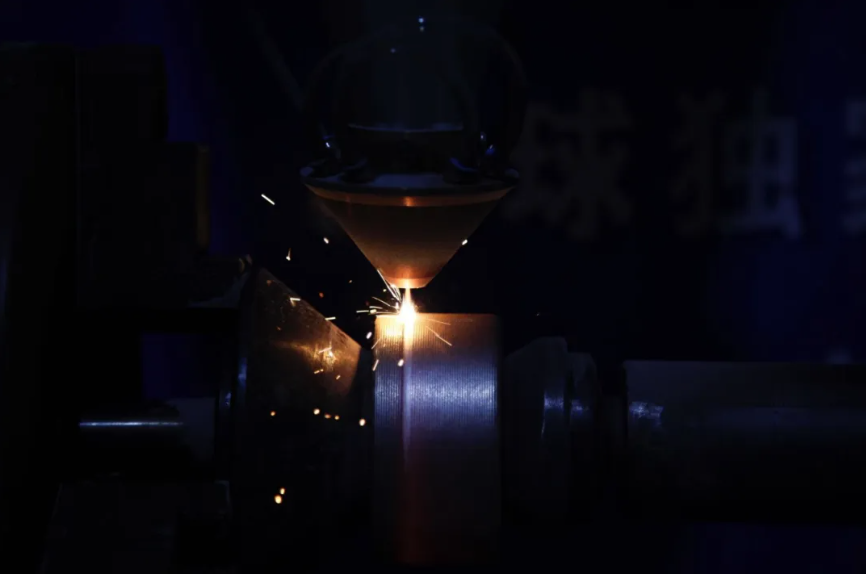How to improve the welding quality of handheld laser welding machine
How to improve the welding quality of handheld laser welding machines? 8 steps can be improved, such as laser power adjustment, welding speed, focal length check, welding gun tilt angle, swing frequency and swing width, filler wire selection, operator training, and daily inspection of protective lenses. These steps can not only improve welding quality but also extend the service life of laser welding machines.
1. Power adjustment: During welding, set the appropriate laser power to obtain the best welding effect. Based on different materials and thicknesses, choose the appropriate power. If the laser power is too high, it may melt too quickly, causing dents or undercuts. If the power is higher, the welding will be successful. For example, the aluminum oxide on the surface of aluminum alloy has a high melting point and high reflectivity. If the laser power is too low, most of the laser will be reflected away. Therefore, when welding ordinary aluminum alloys, it is recommended that the welding power is above 1200w. For example, in copper alloy welding, it is recommended that the laser power is greater than 2000w during wire welding because it is a highly reflective material.
2. Speed adjustment: During welding, the welding speed and welding power should be coordinated with each other. When the material thickness is thin, such as 1-2mm, the welding speed can be faster when the power is higher. When welding thicker materials or wire-feeding welding, the welding movement speed should be slower. If there are dents or undercuts in the welding, the welding movement speed can be relatively increased.
3. Adjustment of focus position: In handheld laser welding, the adjustment of focus position (focal length) is crucial to the welding quality. Find the correct laser focus position to obtain the best penetration depth and width. The correct focal length can ensure that the laser energy is more concentrated and improve the processing speed and efficiency. The correct laser focus is like cutting with the sharpest knife, and vice versa, it is like a blunt knife.
4. Control of welding gun inclination angle: In handheld laser welding, the operator needs to master the correct welding angle and welding route to ensure that the weld shape meets the requirements and improves the strength and stability of the weld. Two angles need to be noted here. The first angle is that the welding gun is kept at about 75 degrees with the moving route (that is, the welding gun is kept at about 15 degrees in the vertical direction of the moving route). The second angle is that the welding gun maintains the same angle with the two pieces to be welded. The materials should generally maintain the same inclination angle. For example, in T-joint welding, the inclination angle between the welding gun and the two pieces of material is recommended to be 45 degrees.
5. Selection of swing frequency and swing width: Generally, the larger the swing frequency of the welding gun, the smoother the weld, but the welding strength or penetration will decrease accordingly. The swing width of the laser gun will also affect the welding strength. When welding thicker materials, the swing width should generally be set to increase accordingly. Therefore, the swing frequency and swing width should be optimized according to the material thickness, weld surface requirements, strength requirements, etc.
6. Selection of filler material: In handheld laser welding machines, the selection of filler material (wire feeding) also has a great influence on the welding quality. Operators need to select appropriate filler materials according to different materials and thicknesses to improve the strength and stability of the welded joint. For example, S304 coiled wire can be used for welding stainless steel materials, S201 copper coiled wire can be used for welding copper or brass, and ER5356 coiled wire can be used for welding aluminum alloys. As for the diameter of the welding wire, it is generally determined by the thickness of the welding material. For example, for a material thickness of 1-3mm, a welding wire with a diameter of 0.8, 1.0mm, or 1.2mm can be used. For materials above 3mm, a welding wire with a larger diameter can be used, such as 1.2mm, 1.6mm, or 2.0mm. Even a double-wire automatic wire feeder can be used.
7. Training of operating skills: To improve the welding quality of handheld laser welders, it is also necessary to strengthen the training of operating skills. Operators need to master the correct operating skills and methods, including welding posture, welding gun angle, welding speed, etc. Through training and practice, the skill level of operators can be improved, thereby improving the welding quality.
8. Daily inspection of welding gun protective lenses: As a consumable of a handheld laser welding machine, daily inspection and replacement of protective lenses are very important. Usually, the inspection and replacement time of protective lenses is 1-7 days, depending on the frequency of using the welding machine and the power used. If laser welding is continued for a long time after the protective lens is damaged, not only will the focused laser power be greatly reduced, resulting in the inability to perform effective welding at the originally set power, but it may even cause damage to other lenses and mirrors inside the laser welding gun, such as the focusing mirror, galvanometer, reflector, and collimator.
Doing the above 8 things well can greatly improve the working efficiency of the laser welding machine, improve the strength and aesthetics of the weld, reduce the failure rate, and significantly extend the service life of the laser welding machine.




Comments
Post a Comment